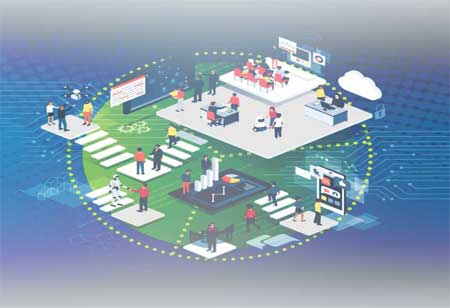THANK YOU FOR SUBSCRIBING
The Role of Automation and Robotics in Logistics
Logistics in automation and robotics are reshaping how goods are managed and transported by advanced technologies that have become faster

By
Apac CIOOutlook | Wednesday, August 28, 2024
Stay ahead of the industry with exclusive feature stories on the top companies, expert insights and the latest news delivered straight to your inbox. Subscribe today.
Automation and robotics are improving logistics by significantly boosting efficiency, speed, and accuracy. These technologies streamline processes and cut costs, effectively meeting the demands of the developing market.
FREMONT, CA: Logistics in automation and robotics are reshaping how goods are managed and transported by advanced technologies that have become faster, more accurate, and highly efficient. As industries continue to develop, automation and robotics in logistics are increasingly pivotal in driving innovation and meeting the demands of a rapidly changing market.
Here are a few automation of the logistics industry:
Warehouse Automation: Uses robotics and automated systems to facilitate the handling and storage of goods through Automated Guided Vehicles (AGVs) to perform tasks such as sorting, packing, and transporting products within the warehouse. This technology enhances storage efficiency, speeds up order processing, and reduces reliance on manual labor by automating repetitive tasks to handle larger volumes of goods with greater accuracy and less human intervention. It leads to faster turnaround times and improved operational efficiency.
Inventory Management: Advanced inventory management provides tracking and analytics of stock levels with automated solutions. These solutions can monitor inventory, predict demand, and manage restocking processes with high precision, minimizing the risks of stock-outs and overstocking by ensuring optimal inventory levels are maintained. Automated inventory systems also facilitate accurate forecasting and order placement, enhancing supply chain efficiency and reducing excess inventory costs.
Order Fulfillment: The use of robotic systems in order fulfillment enables faster and more precise handling of tasks like picking, packing, and sorting items. The process of an order from receipt to shipment minimizes errors and increases order fulfillment, leading to faster delivery times and higher customer satisfaction, enhancing productivity and operational efficiency.
Last-Mile Delivery: Autonomous vehicles and drones are increasingly used for last-mile delivery, the final stage of transporting goods from distribution centers to customers. These technologies offer cost-effective solutions for delivering packages directly to consumers’ doorsteps, reducing delivery times, operational costs, and reliance on traditional delivery fleets. Drones and self-driving vehicles can navigate urban environments efficiently, improving the speed and reliability of last-mile deliveries and reducing traffic congestion and carbon emissions.
Supply Chain Visibility: Enhance supply chain visibility by integrating IoT sensors and data analytics platforms, providing insights into the location and status of goods throughout the supply chain. Enhanced visibility allows businesses to monitor and manage the movement of products, optimize routes, and address potential disruptions proactively. Data-driven insights from automated systems enable better decision-making and risk management, ensuring smoother and more transparent supply chain operations.
Labor Efficiency: This improves labor efficiency by automating repetitive and labor-intensive tasks and offloading these tasks to robots. Human workers focus on more complex and strategic activities to enhance productivity and reduce the risk of error and injury. Automated systems increase the speed and accuracy of operations, allowing for more effective use of human resources and contributing to a safer and more comfortable working environment.
Predictive Maintenance: Uses data analytics and machine learning to prevent equipment failures before they occur through sensors and monitoring systems to track the performance and condition of machinery, identifying potential issues through data analysis. This approach enables timely maintenance actions, reducing unexpected downtime and repair costs by addressing problems before they escalate. Predictive maintenance ensures continuous operation and enhances the reliability of logistics equipment.
Sustainability: Contributes towards sustainability in logistics by optimizing energy use and reducing waste through efficient operations, precise inventory management, and streamlined transportation processes to help lower carbon footprints and minimize environmental impact. Automated systems support eco-friendly practices by improving resource utilization and reducing excess production. Sustainable logistics practices lead to lower energy consumption, reduced emissions, and less waste, contributing to environmental conservation efforts.
Automation and robotics are crucial for modernizing logistics and enhancing traditional practices with highly efficient and accurate operations. These technologies bring about significant improvements in speed, accuracy, and cost-effectiveness. The innovation boosts operational efficiency and sustainability, developing the logistics industry to enhance productivity and adopting helpful technology.





